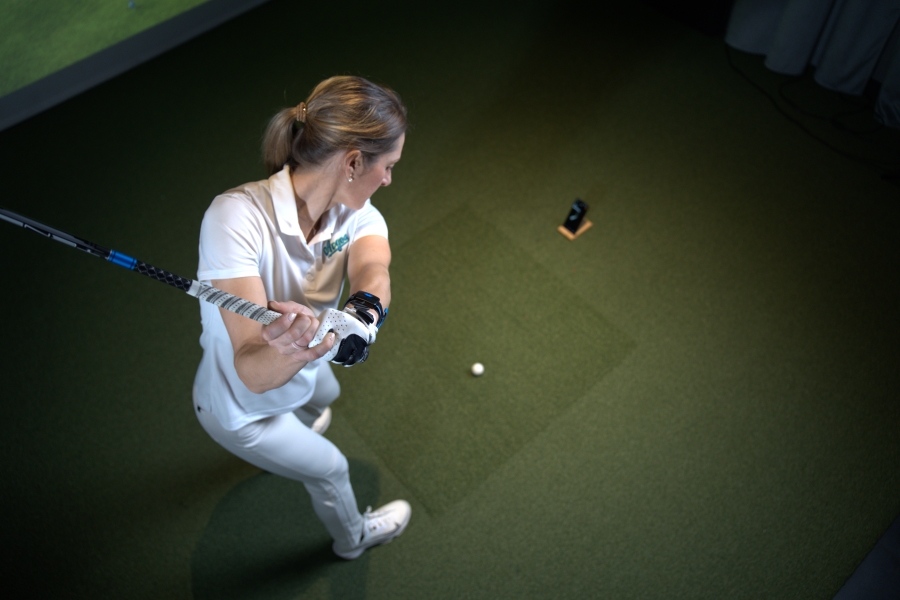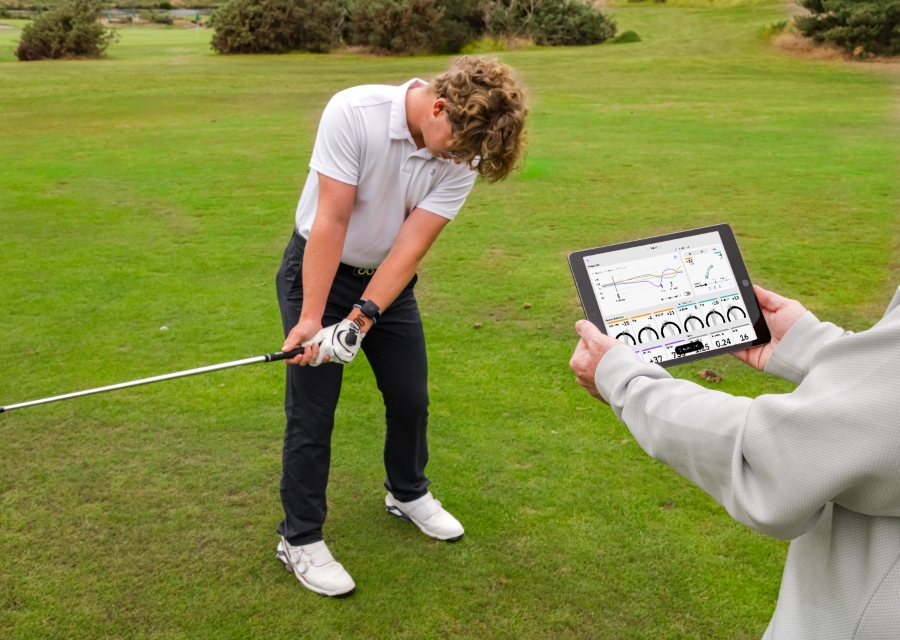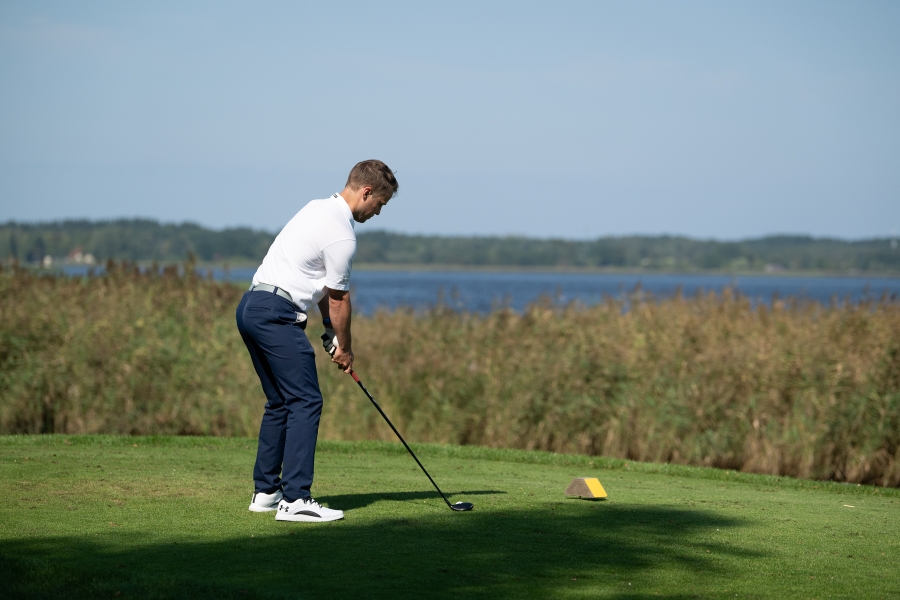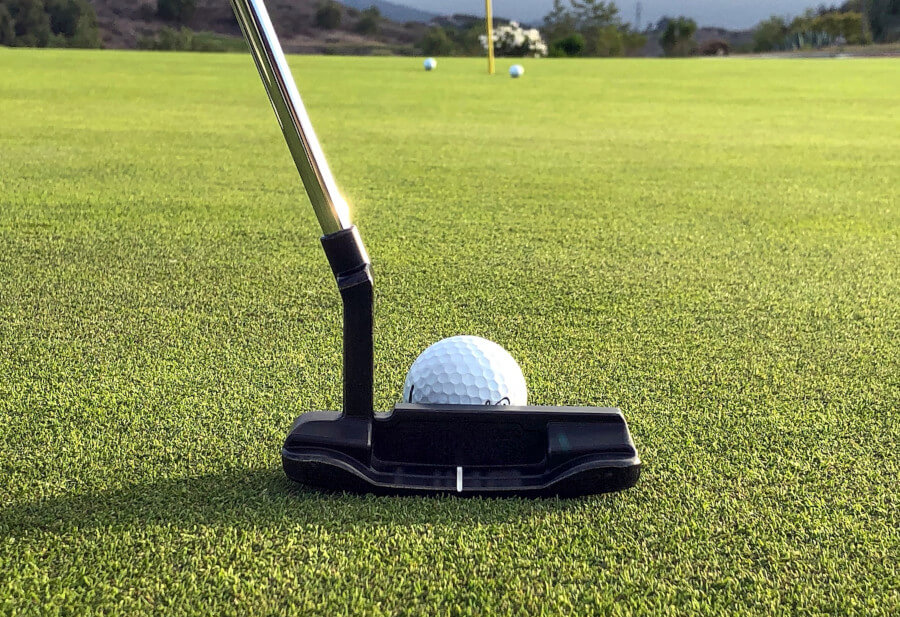Fix Your Outside-In Golf Swing with These 6 Proven Drills
The outside-in golf swing, or as you might refer to it, “coming over the top,” is one of the most common reasons golfers slice or pull their golf shots.
Instead of clean and consistent contact with the ball, the outside-in golf swing can make your golf game highly unpredictable.
Most golfers who struggle with the outside in golf swing simply need to feel what it’s like to get the swing on plane, and from there, they can adjust and start being more consistent.
Whether it’s your takeaway, setup, wrist position, or swing timing and sequence, these drills should help you figure out the cause of your outside in golf swing and resolve it today.
Contents
The Secret to a Better Golf Swing Starts with Your Wrists
Your clubface angle at impact determines 80% of your shot’s direction—your wrists control that angle. Click here for the best drills to master your wrist mechanics and take control of your game.
6 Proven Drills to Fix Your Outside-In Golf Swing
Flare the Trail Foot
When the trail hip rotates in the backswing, it frees up some room for you to take a more inside-out golf swing.
If you set up with your trail foot flared out around 15–25°, it may be just enough to get the club deeper behind you and give you a little more space to swing from the inside.
While we call this a drill, you can take this strategy and start playing with it on the course.
- Video Timestamp: 1:02
Flare the Trail Foot – Step by Step:
- Address the Ball: Set up as you normally would, but rotate your trail foot (for a right-handed golfer, this is your right foot) outward by 15–25°.
- Check Your Balance: Make sure your weight is balanced between the balls and heels of your feet.
- Bigger Turn: Swing to the top, feeling a deeper hip rotation. Your trail hip should feel less “blocked.”
- Inside Path: With your hips more open at the top, the downswing can more easily drop to the inside instead of coming over the top.
Deeper Backswing (Lead Arm in Line with Shoulders)
When your hands and arms are too high and out in front of you, you cannot get to the inside-out swing position. Instead, you’ll want to get them deeper behind you.
Some players may feel this as swinging more around, but we call it a deeper backswing so you don’t take the club too far inside. (Watch the video above – timestamp 5:03 – 6:07).
Deeper Backswing – Step by Step:
- Set Up Normally: Grip and posture stay neutral.
- Shoulder Alignment: As you swing back, feel your lead arm line up more with your shoulders—almost as if the butt end of the club is over your trail heel or ankle at the top.
- Maintain Turn: Allow your shoulders and hips to rotate fully.
- Drop It In: From this deeper position, simply turn and let the arms fall; you’ll notice the path coming more from the inside.
- Exaggerate, then adjust: At first, feel this as a slightly exaggerated movement in your swing. Then, go back to hitting balls and see if the lead wrist has a bit more flexion at the top and the club is on a better path.
Hands to the Trail Pocket
The “Hands to the trail pocket” drill is a classic feel-type drill for shallowing out the backswing.
Many players feel that their arms and hands will generate power in the swing. If you find your arms and hands outracing your lower body to the ball, try to feel your hands move towards your trail pocket on the downswing.
Use this drill as a way to warm up where you feel the hands move to your trail pocket two or three times and then step up to hit a golf ball.
- Video Timestamp: 6:17
Hands to the Trail Pocket Drill – Step by Step:
- Go to the Top: Make your normal backswing.
- Feel the Drop: Initiate your downswing by lowering your arms/hands toward your trail hip pocket—rather than spinning your shoulders.
- Keep Shoulder Closed: Let your trail shoulder “sit back” as long as your arms drop.
- Rotate Through: Once you’ve dropped the arms, rotate to finish. The club will track more inside-out instead of over the top.
Motorcycle Drill
If your clubface is open, you’ll instinctively swing left (outside-in), trying to square it. The “motorcycle” move (sometimes called “twisting the throttle”) helps close the face sooner.
Mastering the Motorcycle move not only helps ensure you have a more inside-out swing, but it also squares the clubface for better compression and more power.
The Motorcycle Drill is built into the HackMotion app so you can practice it in real-time and get data and information as you work through it.
Motorcycle Drill – Master Wrist Flexion in the Downswing
Focus on continuously adding flexion until the club reaches parallel, then smoothly complete your swing.
HackMotion Motorcycle Drill – Step by Step:
- Swing to the top: Swing the club to the top and ensure the lead wrist is flat.
- Twist the Grip: Feel as if you’re twisting the top hand “down” (like revving a motorcycle) so the clubface tilts more closed.
- Gradual Rotation: Keep rotating or “closing” the face as you approach impact, rather than flipping it at the last second.
- Ball Flight Feedback: Start with small swings. If the ball still leaks right, exaggerate the “motorcycle” feel a bit more until you see straighter or left-curving shots.
Headcover Gate for an Inside Path
Up to this point, we have mostly talked about feel-type drills. These feel drills are made more relevant by wearing the HackMotion and ensuring your lead wrist position leads to a square clubface.
However, if you are a visual learner, this headcover gate drill is a great option for creating a more inside path.
The best part about this drill is that once you learn it, you can make adjustments to work on both inside and outside path issues. If you don’t have extra headcovers to use, an alignment stick also works just fine.
- Video Timestamp: 4:06
Headcover Gate Drill – Step by Step:
- Create a Gate: Place a headcover or alignment stick a few inches outside the ball (front and back) to form a channel.
- Practice Swings: Rehearse shallow, inside approaches. If you hit the headcover, you’ve come too steep or outside-in.
- Start Slow: Begin with half-swings so you learn the new route without fear of hitting the objects.
- Build Up: Move to three-quarter or full swings, focusing on missing the gate and delivering the club from the inside.
- Combine with Release Drill: Combine this drill with the HackMotion release drill to improve your impact position and hit the ball with a square face.
Hit Hard, Stop Quick Drill
The Hit Hard Stop Quick drill forces you to blend body rotation with proper arm and wrist release.
If you are coming over the top, sometimes it’s because your arms are taking over and your hands are not releasing through impact.
If you stop turning too early, flip at impact, or simply aren’t sure what a proper impact position feels like, the Hit Hard Stop Quick drill gets the club back on track and helps you train both power and control.
- Video Timestamp: 7:24
Hit Hard, Stop Quick Drill – Step by Step:
- Short Follow-Through: Take a full backswing, but after you strike the ball, try to “brake” the club quickly—well before a normal finish.
- Feel the Snap: That sudden stop in your body rotation helps propel the clubface through impact, releasing it squarely instead of swinging left. You’ll naturally learn the right movement because you’ll be focused on what you have to do to stop the club.
- Start Medium: Begin at half-speed. Even with a shortened finish, you want to feel a crisp contact and the lead wrist in a slightly flexed position.
- Increase Speed: As you get comfortable, swing faster from the top while still stopping short. You’ll learn to square the face and harness speed in a tight window.
If you struggle with wrist flipping in addition to your outside-in swing path issue, take a look at our complete course on how to stop flipping wrists.
Final Thoughts
All these drills share a common goal: getting the club traveling on a more neutral or even slightly in to out path through impact. Try them one at a time until you get the feeling of what you should be doing.
Wearing the HackMotion helps you get real-time feedback and data that you can then use to start hitting straight shots and say goodbye to the slice. For even better results, you can also work with golf coaches in your area who use HackMotion to help players fix their slice faster.















